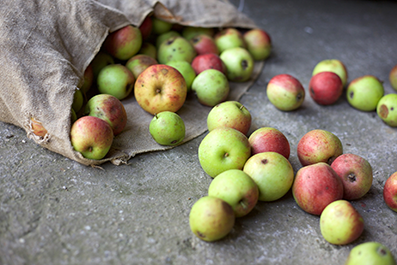Reducing Food Waste: 4 Ways Manufacturers Can Help
As prices and supply chains continue to reel in the aftermath of recent disruptions to our global food system, food security has become a reinvigorated topic of public conversation. An important part of that conversation is the problem of food waste – food that’s grown, harvested, or processed, but never eaten. Recent research estimates that 20% (or 11 million tonnes) of all the food produced in Canada annually becomes avoidable loss or waste (VCMI, 2019). Unbeknownst to most of us, Canada has a fast-approaching commitment to the United Nation’s 2030 Agenda for Sustainable Development which sets a target to “halve per capita global food waste at the retail and consumer levels and reduce food losses along production and supply chains, including post-harvest losses” by 2030.
So, what is food waste, why does it happen and how can we work to reduce it?
What is food waste?
Simply put, food waste is food that is grown, raised, caught, harvested, or processed, but never eaten. For the purposes of this article the term food waste will be used to describe what some consider “food loss” or sometimes “food scrap” which refers to the disposal of food up to but excluding anything at the retail stage or beyond.
While food waste occurs throughout the entire supply chain, given Mallot Creek Group’s industry experience, we feel we might offer specific insight into waste at the manufacturing level.
What are the causes of food waste in manufacturing?
Within a food manufacturing facility, raw materials are transformed into the finished products we all know and love. Within this process, food and food ingredients can get lost along the way. Here are a few drivers we consider most pertinent to the problem of food waste:
Overproduction
Like any manufacturer, food manufacturers like long, uninterrupted production runs. While this can increase efficiency it can also be taken too far – and when dealing with food products, finished goods have a limited shelf life. If a manufacturer makes more product than they’re able to sell… food gets wasted. Part and parcel of this problem are manufacturers expecting disrupted production flows and overplanning to ensure fulfillment of customer orders to buffer inefficiencies. When things go smoothly, they make too much food.
Imperfect Procurement Practices
Manufacturers want to plan to purchase the perfect amount of ingredients for their production runs. The problem is, they’re not always perfect. Sometimes they purchase too much of an ingredient (just in case) and it spoils before it can make it to the kitchen. Similarly, they may simply be inaccurate in their demand forecasting resulting in the same issue: too much raw material.
Product Defects
Manufacturers produce product to a certain quality specification: size, weight, colour, texture, etc. When they don’t achieve that specification, product is either reworked (i.e., they try again) or, if required, the product is disposed of. Sometimes these specifications are customer specific but breaching them may also infer that the safety of the food has been compromised… in which case the situation is more serious, and the food needs to be considered waste.
How can food manufacturers reduce waste in their facilities?
1. Make Food Waste a Cultural Rallying Point
While it’s a bit ambiguous to say, we would be remiss if we didn’t say it. Creating a culture around the reduction of food waste is the #1 thing a company can do to reduce it. That means leadership needs to take it seriously and make it an important part of their objectives and messaging to employees. It needs to be talked about in morning meetings, tracked as a Key Performance Indicator, and celebrated when efforts in reduction are made. The nice thing about targeting food waste as a continuous improvement initiative is that it shouldn’t be controversial: it saves money AND is an environmentally/economically sustainable practice! That’s a win-win.
2. Measure Your Food Waste
If we’ve said it once, we’ve said it a thousand times: you can’t manage what you don’t measure! Every type of food waste in a manufacturing facility should be measured to ensure management has transparency into the issue at hand and can make data driven decisions.
3. Be Better Forecasters
Customer demand is not always a simple thing to anticipate but there are ways to ensure forecasting is at its best. Manufacturer’s need to make sure production and sales teams are working together and that includes labour planning. In today’s crazy labour market where absenteeism is the rule more than the exception, forecasting shouldn’t end at customer orders but include the people that run production.
4. Ensure Quality Assurance Standards are Practical
QA standards are an important part of making sure customers get what they want. That said, QA and production teams can sometimes get a bit… disconnected. When that’s the case, manufacturers need to ensure they’re not giving customers MORE than what they want. In this context, that means reworking or throwing away food that the customer would have otherwise accepted. That’s a lose-lose.
Is your company struggling with high amounts of food waste within your manufacturing facility? If so, our Process Improvement team has the expertise to help. Our specialists use Lean, Six Sigma, and Total Quality Management (TQM) methodologies to help food manufacturers identify production constraints within their facilities and make tangible improvements. Contact us today!


